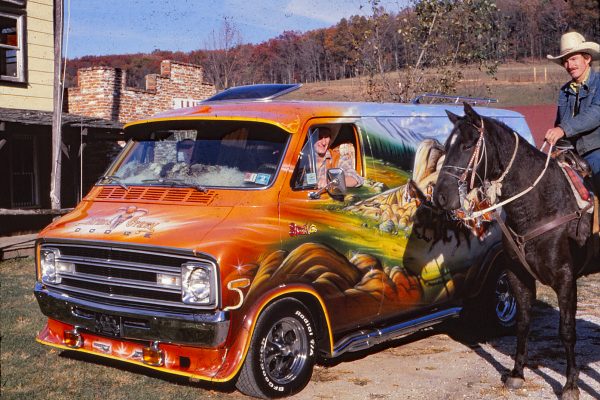Feature/review originally published in Road & Track Complete Sport-Utility, Pickup & Van Buyers Guide 1994
So it looks like an oversized Lego project. That’s half the attraction. The other half is that it’s the least expensive 4×4 on the market. It also has the best fuel economy of any sport-utility, which could be half of its attractiveness. And another half comes from its reputation for reliability, another from its fundamental fun-to-drive personality. It all adds up to the Suzuki Samurai, a most endearing and enduring mini-ute.
The Samurai was Suzuki’s maiden entry into the American market back in 1985, and an immediate success. It was partly a fad that collapsed when safety ninnies accused the Samurai of being especially prone to rollovers. Yet the fundamental qualities of the caps MRI have enabled it to stake out a solid niche at the lowest end of the sport-utility market. It’s no poseur. It’s a real off-road champ that will go almost anywhere the big boys go and some of the places they can’t.
The Samurai does it all with simplicity. Bolted on a rugged separate chassis ladder frame, the welded steel body has a minimum of compound curves. Old-fashioned (and cheap to replace) round headlamps plug into a wire mesh grill. The doors, which close with a definitive plan, pivot on exposed hinges.
The Samurai’s suspension is rudimentary, with live axles on leaf springs front and rear, an anti-roll bar added up front. Brakes, with power assist, are floating-caliper discs upfront, drums at the rear. For 1994 Suzuki has added a center high-mounted stoplight that rises like ET’s head on a stalk on the rear tire carrier. It looks vulnerable.
Suzuki dropped the rear-drive Samurai for ‘94, making the only drivetrain a 1.3-liter sohc inline-4 coupled to a 5-speed manual transmission and a 4-wheel-drive dual-range transfer case. Wheel hubs are manually locking. The aluminum-block engine has two valves per cylinder and throttle-body fuel injection, but cranks out 66 bhp at 6000 rpm, 76 lb-ft of torque at 3500 rpm.
Seating is two front buckets; 27.8 cu ft of cargo volume is in back. And yes, there are rubber floor mats and a dash limited to the basics. There’s no hard-top version and the canvas top is no padded cabriolet cover. It will keep the rain out, but it still lets the noise in when raised – or more accurately – constructed, with countless snaps, zippers and Velcro attachments and a tentpole or two. There could be a merit badge in this, scouts. Maybe better to go topless.
Although the Samurai can keep up on the Interstate, that’s not little ute’s forte. The engine roars, the short wheelbase bounces across highway slabs, and halfway across the state – any state – the adventure wears thin and your wishing you had taken the Lexus.
Don’t expect the handling of a car on the road or a city street, either. But then don’t expect cars to do what the Samurai will do in the outback. While its recirculating-ball steering is some-what numb on the road, it’s perfectly adequate at low speeds, with no power assist necessary. Taking the Samurai off-road means getting out to engage the front hubs and shifting the floor lever into high 4WD, or if the going will be really slow, low 4wd.
The Samurai has big P205/70R – 13 all-season radials on styled steel wheels, and an approach angle of 43 degrees. Keep your revs up and you can pick coconuts off the tree from the driver’s seat. Well, almost. Anyway, Suzuki has provided a sturdy grab bar on the dash for the passenger when the going gets rough. A curb weight of a mere 2046 pounds means the Samurai doesn’t have to work hard to maneuver and a 33.5-foot turning circle makes tight trails easier. An 8.1-inch ground clearance clears obstacles in a single bound. Don’t worry. If the driver has the talent, the Samurai has the toughness to get through.
If the Samurai is too Spartan, however, Suzuki can help with a raft of options and accessories, including air conditioning and a security box, the latter necessary due to the open vehicles vulnerability. A new accessory for 1994 is a security alarm. Your Suzuki dealer can also set you up with a variety of skid plates and guards to keep your Samurai’s vitals from harm’s way.
All in all, the Samurai is still in Suzuki’s inventory because it does what it does very well. No matter how you end up, the cute brute is equal to more than the sum of its parts.











What Do You Think?
You must be logged in to post a comment.